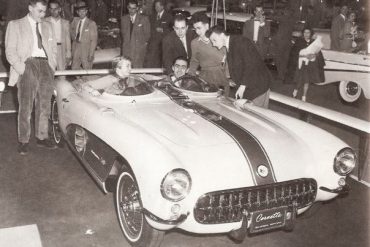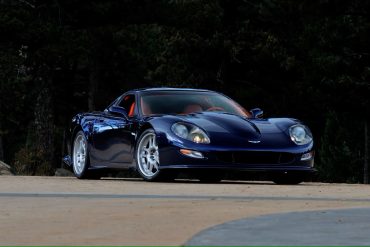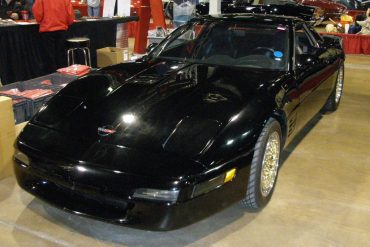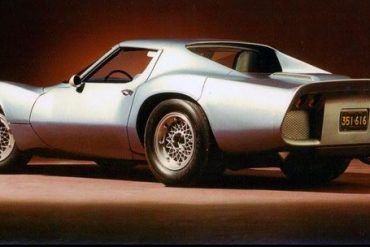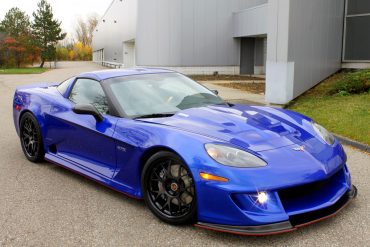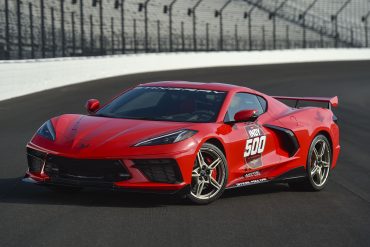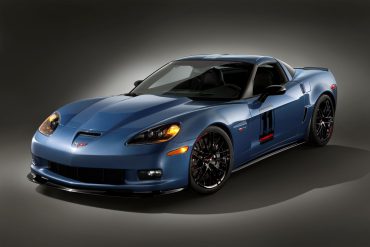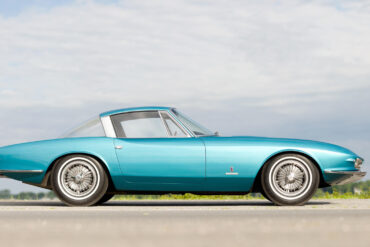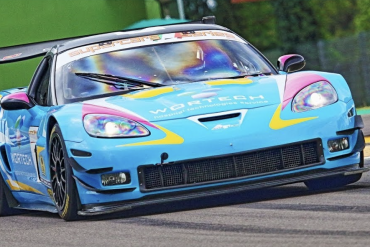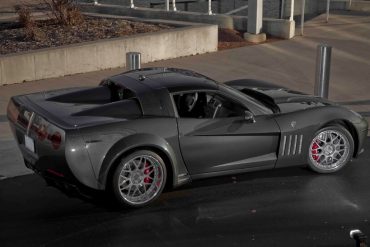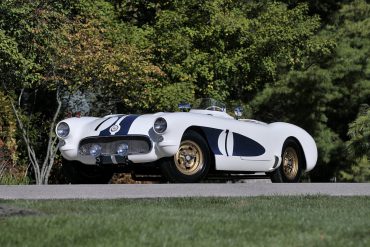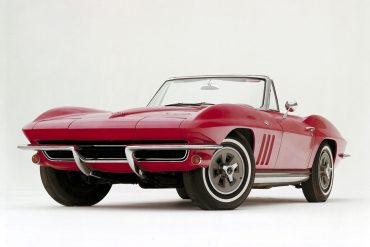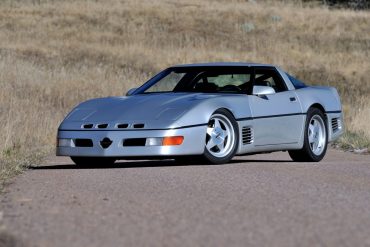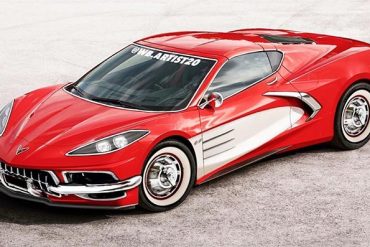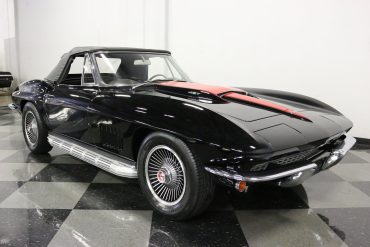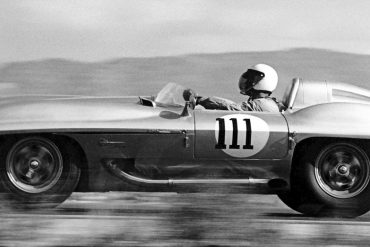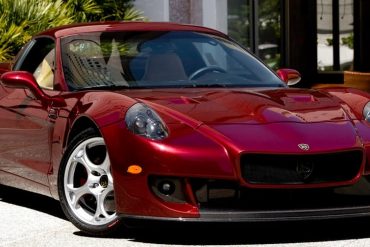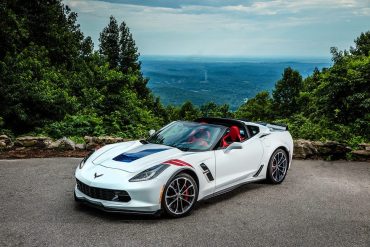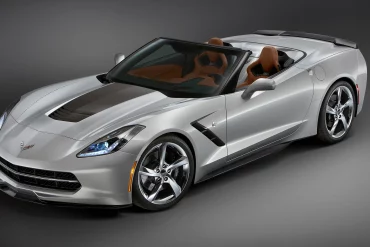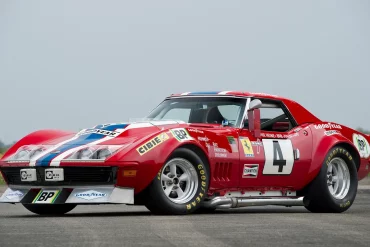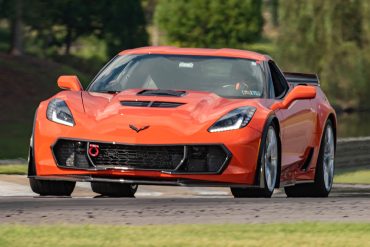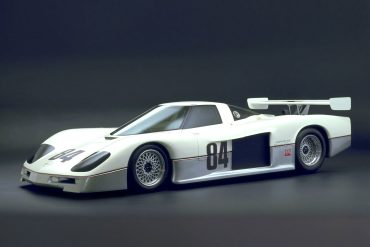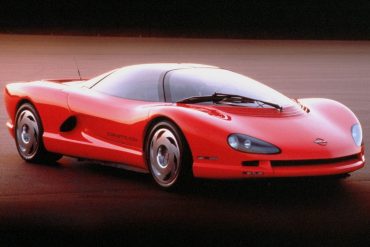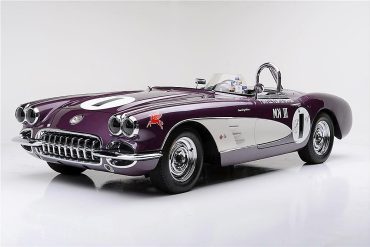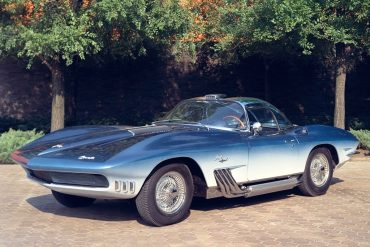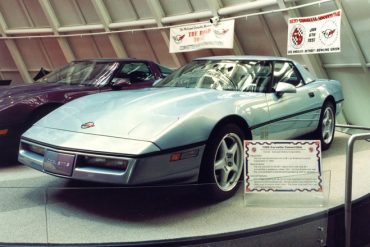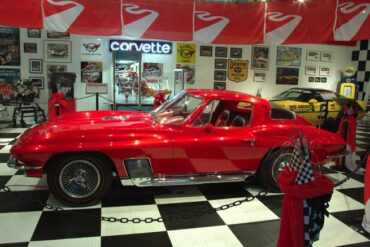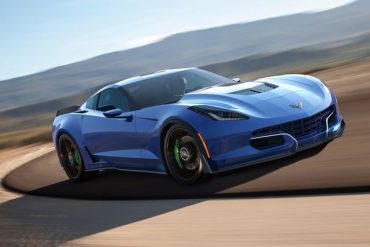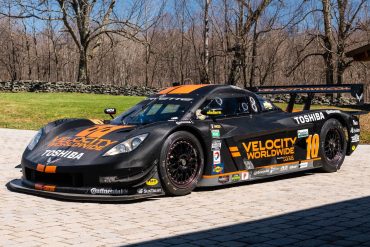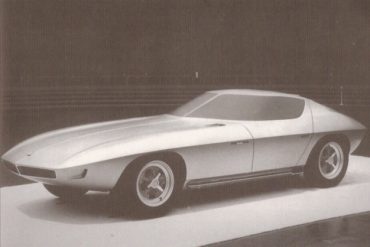The Corvette SS racing car and its mule test car were planned as far back as August of 1956, well before the Super Sport show car. However, that one was referred to within GM as the XP-64, and it was finished in march, well after the show car had been on the show circuit for a couple of months.
When Chevrolet introduced the fifth-generation Corvette in 1997, Callaway immediately began development of a platform that would compliment and enhance the all-new C5 model. Reeves Callaway,...
CERV IV was nothing more than a C4 with the all new powertrain and interior in it. Read the commentary of a car magazine reporter: "We suspect that the first, very early prototypes of the all-new, Gen III ran on the dynos at GM Powertrain sometime in the early spring of 1993. In-vehicle testing began at the GM Milford Proving Ground in the first week in May of 1993 with the "Chevrolet Engineering and Research Vehicle IV-A".
The XP-819 Corvette prototype was introduced in 1964 by Frank WInchell and Larry Shinoda as the first, experimental, rear-engine Corvette coupe. The XP-819 was developed in the mid-1960's as an engineering exercise to determine if a rear-engine platform was right for the Corvette program. During that time, Chevrolet was still under a racing ban.
Based on the Corvette Z06, this new GTR also represents a collaboration between Specter Werkes and Lingenfelter Performance Engineering, with a Lingenfelter twin-turbo system powering the car – and pumping its 7.0-liter LS7 engine to 800 horsepower. Featuring dramatic bodywork and carbon fiber details, the GTR blends racing-inspired design cues with uncompromising luxury and performance.
A Torch Red 2020 Corvette Stingray coupe will serve as the Official Pace Car for the 104th Indianapolis 500 presented by Gainbridge, continuing Chevrolet’s tradition of leading the field to the green flag. The Pace Car will be driven by GM President Mark Reuss. This marks the 17th time a Corvette has served as the Pace Car, starting in 1978, and the 31st time a Chevrolet has led the field dating to 1948 when a Fleetmaster Six convertible held the honor.
The Z06 Carbon was created to celebrate the 50th anniversary of the first appearance of the Corvette at the 24 Hours of Le Mans when John Fitch and Briggs Cunningham won their class and finished eighth overall. The Carbon edition is essentially a Z06 with a ZR1 chassis and some of the carbon skin. With only 500 examples made, this is one rare and special looking Vette. The limited edition is distinguished by an aggressive look and black accents, reminiscent of the Porsche 911 GTS range.
The Corvette Rondine concept was built by Pinanfarina and introduced at the 1963 Paris Motor Show. The car started life as a 1963 split-window Corvette, which is all the more unusual because Chevrolet introduced the split-window coupe at the same time that Pinanfarina was introducing a custom-built Corvette based on that very same platform.
During the summer of 2005, a decision was made to transform selected Z06 road cars into a new breed of racer to compete in the world's top GT3 championships. The first series to introduce this new GT3 class was the SRO and FIA's GT3 Championship. Based on their racetrack test results, Team Carsport saw instant potential in the car. Hezemans contracted Callaway Competition in conjunction with Koos Pettinga, manager at Corvette Europe, to convert the street Z06 into a Z06R GT3.
Despite being an avid enthusiast for nearly three decades, I have stumbled upon yet another custom Corvette I never knew...
In 1956, Ed Cole, then General Manager of Chevrolet, decided Corvette could be saved from extinction due to lagging sales by promoting the car as a performance car which could be raced in production classes. The first of these Corvettes was to debut at Daytona Beach for acceleration and top end speed trials, the 12 hour race at Sebring, and also possibly Le Mans.
The L84 was the most powerful 327 available for the 1965 Corvette thanks to its Ram-Jet Fuel Injection which was an expensive $538 option. For competition, race customers had a range of options available to them including the N03 36-Gallon Fuel Tank, closer rear axle ratios and the C48 Heater/Defroster Delete (-100).
This Sledgehammer reached 254.76 mph at the Transportation Research Center (TRC) in Ohio and became the world’s fastest street-legal car for some time. It was built up by Reeves Callaway in Connecticut as an example of what was possible with the new ZR1 and and turbocharging its LT5 engine. The result was a 898 bhp coupe that still retained luxuries such as air conditioning and a radio. It got this power by using a NASCAR-spec block with Mahle pistons and a massive turbo.
What Do You Think? The Corvette has a long and robust history. We have one of the best databases for...
The L71 was Chevrolet’s most powerful engine in 1967 which replaced the big-block L71 from the previous year. Using it’s famous ‘Tri Power’ intake manifold was rated by the factory at 435 bhp. Costing $437.10, 3,754 Corvettes were made with the L71 options and they could not come with automatic transmissions nor air conditioning.
In 1959, the bones of the SS were revived when Bill Mitchell secretly funded the Stingray race car. Mitchell purchased the chassis of the 1957 SS race car mule for $500 and had a design team create a new body. Mitchell felt the first generation Corvettes were too rounded and soft, so the Corvette Sting Ray Racer featured a sharper body edge that made it work.
As early as the late 1990's, San Francisco based coach-builder SV Motor Company envisioned a car that took the raw performance of a Corvette and refined it with a touch of Italian flair. Their vision was to infuse many of the design elements found in the Alfa Romeo 8C Competizione (from which the SV 9 clearly drew its inspiration, as well as its name) with a 2009 Chevy Corvette.
The 2017 Chevrolet Corvette Grand Sport combines a lightweight architecture, a track-honed aerodynamics package, Michelin tires and a naturally aspirated engine to deliver exceptional performance. The Grand Sport Collector Edition features an exclusive Watkins Glen Gray Metallic exterior with Tension Blue hash-mark graphics, satin black full-length stripes and black wheels. the new Grand Sport combines a lightweight architecture.
Chevyt presented a trio of Corvette Stingray concepts. Many of the items fitted to the cars are available through the Chevrolet Accessories and Chevrolet Performance catalogs. Designed with cruising in mind, the Stingray Atlantic convertible concept features stunning Blade Silver paint, while the Stingray Pacific concept is more race-inspired and the Stingray Gran Tourismo was created to commemorate the 15th anniversary of the Gran Tourismo video game.
The Corvette L88 Scuderia Filipinetti Le Mans Racer holds a significant place in Corvette's racing history. With a coil spring front suspension and an L88 engine prepped by Zora Arkus-Duntov and smuggled out the back door to circumvent GM's ban on racing, the L88 was driven at the 1968 24 Hours of Le Mans by Henri Greder and Umberto Maglioli. It dominated the Porsches and led the GT class til 6th hour when carburetion problems melted a piston.
For the 2014 model year, the Chevrolet team sculpted the seventh-generation Corvette into the most sophisticated, most feature-packed Corvette produced to date. Facing a daunting challenge, new technology enabled Callaway engineers to produce breathtaking power with seamless transition into and out of positive manifold pressure. Entirely new, Callaway’s patented GenThree supercharger design improved airflow quality and increased charge air cooling capacity.
A Corvette in name only, the Corvette GTP (Grand Touring Prototype) was one of the fastest and most exotic race cars ever to wear a red Bowtie. Based on an English Lola T600 chassis and powered by an all-American turbocharged Chevy V6, the mid-engined racer was a rocketship. At full boost, the Corvette GTP's 3.4-liter (209ci) V6 pumped out more than 1,000 horsepower.
The 1986 Corvette Indy Prototype was developed beyond clay modeling to the point of a fully-functioning, drivable car, though it was clearly understood that this car would never evolve beyond the prototype stage. Like the clay mock-up before it, development of the mid-engine Indy prototype began in 1985, pulling design cues from its predecessor.
The Purple People Eater MKIII is a 1959 Corvette that was literally unbeatable in SCCA B-Production racing in the late 1950s. There were three Purple People Eaters built in 1958 and 1959. The 1959 model, won every race it entered, except the last one, with Jim Jeffords behind the wheel and mechanic Ronnie Kaplan turning wrenches. The car was built by a team at Nickey Chevrolet in Chicago.
The Mako Shark Corvette was conceived and designed by Larry Shinoda under the direction of Bill Mitchell to provide GM’s...
There were several successful attempts to build a convertible ZR-1, most of them by private people. The DR-1 was a GM prototype to test the structural integrity of the ZR-1 chassis when it would be topless. The car was built by American Sunroof Corporation (ASC) for Don Runkle, who was the vice-president of Advanced Engineering Staff, which explains the “DR-1” designation. It was a standard convertible transformed to ZR-1 specs.
For the 1964 New York World's Fair, Bill Mitchell and his Styling team at the Tech Center customized a production Sting Ray under Shop Order #10361 with a variety of items that transformed the already impressive Corvette into a showpiece like no other. An opening was cut into the center of the car's hood exposing a polished fuel injection manifold with the Corvette crossed flags in its very center.
Genovation Cars unveiled an electric Corvette with more power under its hood than a Dodge Challenger Hellcat. They call their car the Genovation GXE, and it is an EV (electric vehicle) variant of the seventh-generation Corvette. The company decided that they would replace the factory LT1 engine found in all base-model C7 Corvettes with a pair of electric motors that, when working in conjunction with each other, provide over 800 horsepower and 700 pound-feet of torque.
The Corvette Daytona was an officially sanctioned race car created to compete in the now-defunct Rolex Race Car Series during...
The 1963 Wedge Corvette split windshield concept was a sleek, front-engine design study that revived the Q Corvette’s split-windshield gullwing-style doors with a short, bobbed tail. Late in 1963, a GM Styling team under Henry Haga prepared this future Corvette proposal. Its sophisticated lines included side-mounted exhaust pipes.


